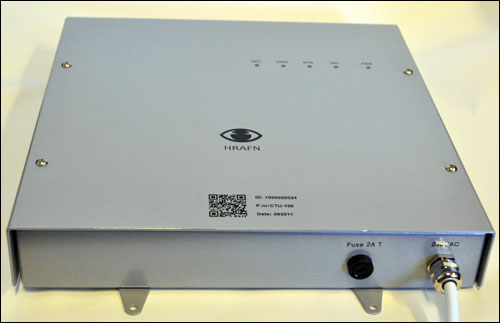Sep 27, 2011Central Norwegian construction firm Grunnarbeid, having tested an RFID solution to track its tools as they are transported to—and stored at—construction sites, is deploying the system throughout its operations. The company is currently in the process of applying EPC Gen 2 ultrahigh-frequency (UHF) passive RFID tags to approximately 1,000 pieces of high-value equipment, as well as installing devices containing an RFID reader, a GPS unit and a cellular communications radio on 88 delivery vehicles and 50 containers.
The hardware is being installed by RFID company HRAFN. Once the system is fully deployed, Grunnarbeid expects to have increased visibility regarding where tools are located and when they are removed from a specific site, thereby reducing the amount of time employees spend delivering, picking up, searching for and transporting equipment from one job site to the next. A clear understanding of where equipment is located, explains Janne Tellefsen, Grunnarbeid's marketing consultant, will make it unnecessary for staff members to make trips seeking or delivering equipment that may already be on site, but not yet documented.

The company currently completes 133 deliveries daily, moving equipment from one site to another, or to and from its central warehouse in Trondheim. The system, Grunnarbeid hopes, will reduce that amount by about 80 percent. The firm estimates that it spends approximately 24.5 million krone ($4.3 million) annually on the unnecessary movement of equipment, or its staff driving to a location simply to discover that the required assets are not there.
Grunnarbeid will attach tags provided by Omni-ID and TheTagFactory to high-value equipment stored at the warehouse or deployed at the company's construction sites. Assets to be tagged include laser measurement tools, pumps and electric saws (lower-value tools will not be tagged).
Each RFID/GPS/cellular device, developed and provided by HRAFN, contains a CAEN RFID reader and an Owasys computer that captures and stores information about the RFID tags being read, as well as the longitude and latitude of the vehicle or container. All of this data is then sent via the cellular link to the TraceTracker Asset server. A device is being attached to each of Grunnarbeid's 88 delivery vehicles, as well as to each of the 50 containers that the company uses at construction sites to house idle equipment.
Every time a tagged tool is removed from a container or vehicle, the interrogator detects that the item's tag is no longer being read. The tool's status change is forwarded to TraceTracker, which then updates that asset's status from "idle" to "in use."
With the full-scale rollout—expected to be completed by late 2012—Grunnarbeid will also provide its warehouse staff with handheld RFID readers, and will then begin the practice of reading the tag on every piece of equipment as it is removed from or returned to the Trondheim warehouse. In this way, the company will be afforded a real-time view into what is available in inventory, as well as what has been removed—and when that removal took place. Based on data obtained from devices attached to the vehicles and containers, the firm will then also know when a particular item left the warehouse, to which construction site it was transported and when it arrived at that location.
"We hope this will allow us to reduce the use of rental equipment," Tellefsen says, since it will be unnecessary for the company to rent additional tools if it can locate the appropriate equipment that is onsite but previously unaccounted for.
During the pilot—initiated in the spring of this year, and slated to last for six months—a prototype of the device was installed on each of five containers and five vehicles (see Grunnarbeid Manages Tools With RFID). According to Grunnarbeid, the pilot proved that the technology could provide real-time tool-location data, which could then be utilized to reduce the amount of time workers spend searching for or moving tools from one construction site to another.
Once the full RFID system is completely deployed, Grunnarbeid will also be able to manage its maintenance and inspection schedules, by tracking which items are due for inspection on each construction site. Inspectors could use handheld readers to identify every item being inspected, and input details indicating which procedures were completed at that time. In addition, the software will provide historic records regarding how frequently a particular piece of equipment was used, so that if it were to fail, the company could determine which brands and types are more robust than others.
John P. Alstad, Grunnarbeid's general manager, is scheduled to speak about his company’s RFID deployment at RFID Journal LIVE! Europe, being held on Oct. 18-19, in Amsterdam, the Netherlands.

